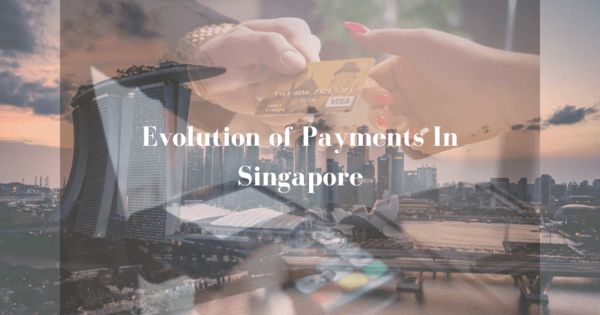Advertisement
OPINIONS
Evolution of Payment Methods
After digital wallets, where are we heading next?
Samantha Ong
04 Jan 2021
Seedly Student Ambassador 2020/21 at Seedly
Introduction
The 2 main drivers for e-payments can be attributable to the advent of fintech and proliferation of smartphones. Today, if we were to look at the cashier counter when making payment, we will see a different variety of ways to make payment. Below is one common sight we always see:

Source: Channel News Asia
These payment methods can be categorised into
Nets Bank Cards / Credit Cards
EZlink /Nets Flashpay
Visa PayWave/ Mastercard Paypass
SGQR payment which includes relevant digital wallets
Apart from retail stores, we also see such developments in the transport industry. The industry has been a driver in promoting contactless payment ever since it included credit and debit card for bus and train payments. Because of these advancements and integration, e- payments have been made ever so seamless and convenient.
In recent years, there has also been an emergence of many digital wallets such as Grab, Dash, RazerPay, etc and they are commonly known to be payments developed by a non-bank financial institution (NFIs).
Still curious?
Let’s go through the developments and evolutions of e-payments and understand how these give us the convenience that we enjoy today.
FAST
Let us start with Fast and Secure Transfers (FAST). FAST was launched back as a result of surging demand for a faster and more efficient funds transfer. Since its inception in 2014, FAST provided a new electronic funds transfer service that enables customers and businesses to perform direct real-time funds transfer almost instantly among participating banks within Singapore.
Paynow
Building on FAST, Paynow was introduced in 2017 and the difference lies in the speed and intuitiveness of Paynow. Paynow offers instant transfer using just a phone number or NRIC while FAST, on the other hand, offers almost instant transfer with a more complicated bank account numbers. Progressively, businesses came on board as well. They are now able to accept payments from customers via their Unique Entity Numbers.
FAST & Paynow
Both FAST and Paynow can be considered a revolution in the Singapore's e-payment landscape because both have managed to gather 3 different parties who were once an individual silo - banks, businesses and customers onto a single platform.
SGQR
As we continued to see the development of various digital wallets, more and more payment methods emerged. Can you imagine seeing one QR code for every single payment methods? The counter will be filled with QR codes. To simplify payments and maintain storefront aesthetics, in 2018, MAS has rolled out SGQR to consolidate all these multiple e-payment into one QR code, simplifying payments for both consumers and merchants. When making purchases, at one glance consumers be able to see the different e-payment options that the merchants accept, hence providing them with the convenience. On the flip side, for merchants, this will be a more cost-effective and aesthetic way to receive payments.All in all, SGQR was able to address the challenges in adoption of e-payment - simplicity and speed of e-payment.
What is to come?
Recently, with digital banking license being awarded to non-bank financial institutions (NFIs), there is another breakthrough in e-payments.
MAS announced in November 2020 that eligible NFIs will have direct access to banking system’s retail payments infrastructure by February 2021. This means that NFIs will be connected to FAST and Paynow. Besides making real-time funds transfers between bank accounts and e-wallets, consumers can transfer funds across e-wallets. Besides, for those who were unable to fund their e-wallets with debit/credit cards, consumers can now use a bank account to do so, presenting a more seamless and integrated platform.
Future Development?
Currently, NFIs is connected to FAST and Paynow via the new application programming interface (API). This also means that this API payment gateway can be used for future banks and other NFIs. Then one might ask what an API is. API is a computing interface that defines interactions between multiple software intermediaries. In simpler term, on a phone when we open messaging app then open notes, we are using API. This development poses a great opportunity for banks and NFIs interactions especially with Singapore adopting open banking which can open up more collaboration and partnerships between financial and NFIs.
Up and coming, there is also an emergence of Buy-now-Pay-Later (BNPL) platforms such as Atome, Hoolah and Rely who are offering alternative credit terms to consumers and especially those who do not have a credit card. I think this is where payments might be heading towards and will be an exciting scene to look out for.
Comments
1326
0
ABOUT ME
Samantha Ong
04 Jan 2021
Seedly Student Ambassador 2020/21 at Seedly
Just an undergraduate hustling :)
1326
0
Advertisement
No comments yet.
Be the first to share your thoughts!
